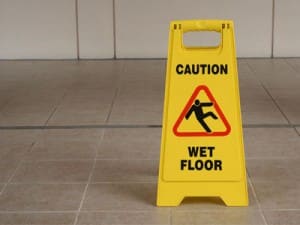 Mold is a microorganism found in nature that uses moisture indoors to spread and grow in unassuming places. Although the term “toxic mold” is widely discussed, mold in its basic form is not actually poisonous. No home or business is completely mold-free at any given time – particularly when it comes to the corners of shower floors and basements. However, facility managers and business owners are wise to control mold growth before it damages building materials, employee health and company reputation.
Mold is a microorganism found in nature that uses moisture indoors to spread and grow in unassuming places. Although the term “toxic mold” is widely discussed, mold in its basic form is not actually poisonous. No home or business is completely mold-free at any given time – particularly when it comes to the corners of shower floors and basements. However, facility managers and business owners are wise to control mold growth before it damages building materials, employee health and company reputation.
While many buildings contain trace amounts of mold, allowing spores to multiply and grow can present serious safety hazards. Some molds produce mycotoxins that can damage indoor air quality (IAQ) and trigger various upper respiratory health hazards, such as asthma, allergies and respiratory illness. Aside from the clear health concerns, mold and mildew are unsightly fungi that can deter visitors from your workplace, hotel or retail store.
Per the Center for Disease Control and Prevention (CDC), mold enters a building via doorways, air vents, windows, shoes, bags and people. When invisible mold spores drop onto moisture-prone areas, particularly where leaking or flooding is present, mold spores multiply. Paper products, cardboard, ceiling tiles and wood are havens for mold growth, particularly in rooms without proper ventilation or high humidity. Even upholstery, dust and fabric are susceptible to heavy mold infestation when left damp for too long.
Consider the following symptoms of mold and mildew growth:
- Wheezing
- Watery Eyes
- Rash
- Eye redness
- Coughing
- Runny nose
- Skin or mucous infections
- Systemic infections in individuals with reduced immunity (HIV, diabetes)
The minor, fever-like symptoms are often treated with an antihistamine such as Benadryl. But, most of the time patients are encouraged to remove themselves from the environment which triggered their allergic reaction. Currently, no federal standards or sanctions from OSHA or the EPA to minimize mold hazards in the workplace exist. While you may not face a fine, you could lose employees, clients and customers due to mold infestation.
Tips for Mold Prevention
Mold is best counteracted by preventing growth. Management should regularly check and clean areas prone to mold while monitoring the air conditions inside. A few obvious areas where mold is common include lobby entryways, restrooms, locker rooms and kitchens. Fortunately, floor mats help minimize puddles and lock in moisture to eliminate mold growth in each of these zones.
Because moisture from wet shoes provides the perfect conditions for mold to cultivate, avoiding excess water accumulation is important. Start by placing exterior floor mats outside of doorways to reduce the amount of moisture tracked inside the building. An entryway mat on the interior side provides further drying of wet soles and dripping jackets during inclement weather. Meanwhile, carpet runners allow for larger square footage coverage, keeping vulnerable building materials dry in high-traffic areas such as hotels and high-rise office buildings. For areas with plumbing such as bathrooms and locker rooms, lay down sink and bath mats to catch falling water that would otherwise attract mold.
Eagle Mat and Floor Products aims to help businesses limit mold with preventative measures, including our durable and efficient floor mats. To learn more about commercial floor matting for mold prevention, contact Eagle Mat’s customer support team at 877-333-1018.






